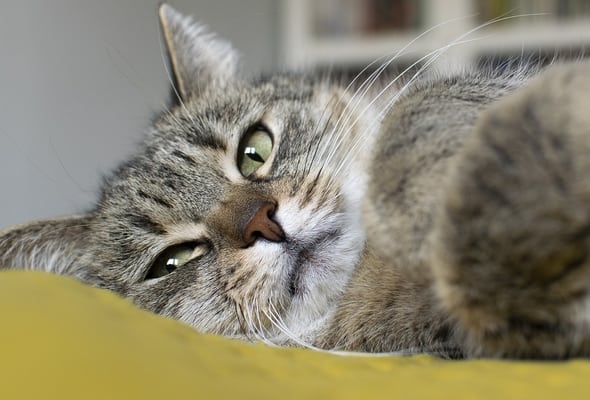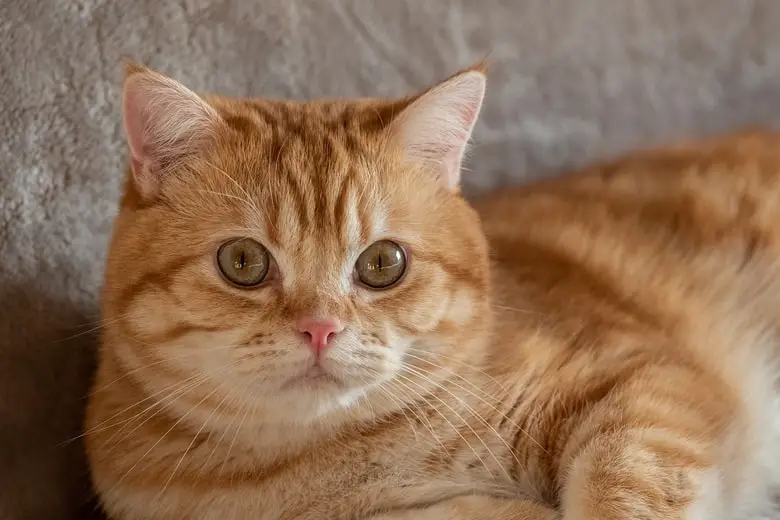One of the most endearing features of a feline is its ears. Cat ears are soft, adorably pointy, and can be delightfully expressive, changing position to indicate a kitty’s mood.
Human beings are inherently drawn to things that are cute and small, so if you’re constantly tempted to play with your cat’s ears, you are certainly not alone. You may wonder, however, do cats like their ears rubbed? Or do they simply tolerate our odd human proclivities?
Do Cats Like Their Ears Rubbed?
The majority of cats do like their ears rubbed. Cats love to be the center of attention and to know that they are admired. While some cats’ preferred love language is snacks, others enjoy being lavished with physical affection, pets, and cuddles.
Cats particularly enjoy pets, rubs, and strokes around their head and will show their emphatic appreciation by purring when you’ve hit the spot. The main reason for this is that cats like to be rubbed where they have scent glands.
Scent glands are microscopic holes that store distinctive smells and release them when rubbed against any surface. Their function is to release pheromones which communicate information about the cat.
Scent is used to enable cats to define territory, create familiarity, announce reproductive status, self-soothe, and bond with one another.
The Pinna glands are present on the outer portion of the cat’s ear and release a gently-scented oil which has the added bonus of keeping them soft. The glands around a cat’s head and face are used to communicate bonding and familiarity.
It’s not just the kitty who benefits, however. Scientific studies have reported that the act of petting a cat releases oxytocin, the feel-good hormone, in our bodies. It is also said to decrease cortisol, the stress hormone.
Why Do Cats Like Their Ears Rubbed?
Rubbing the ears of your cat will activate its Pinna gland, causing the release of pheromones. These pheromones are designed by nature to create a sense of bonding and familiarity. You may have observed cats rubbing their faces and heads on household objects, doorways, and even people to mark them as safe.

This is known as ‘bunting’. Stroking a cat’s ears will generate feelings of trust, intimacy, and affection between you and them, strengthening and fortifying the bond you share. Although cats have a reputation as solitary and sometimes even indifferent to the presence of their humans, this is not the case.
While their temperaments typically appear self-contained and independent, cats still crave a sense of belonging, and they want to feel as though they’re loved and held in high regard by the people around them.
A popular theory is that cats like to be petted because the touch reminds them of their mothers. A cat thinks of you as its surrogate mom and craves your love and affection accordingly.
How Do Cats Like Their Ears Rubbed?
The first step to petting or rubbing an unfamiliar cat, in general, is to approach them with care or wait for them to come to you. Don’t go right for the ears, start by gently scratching the top of the head, showing them that you are not a threat.

Be mindful of signs that a cat is not in the mood for petting. These include flattened ears, dilated pupils, tail-thrashing, twitching, and growling. If you are already friendly with the cat in question, or when you are sure you have firmly established trust with a new cat, you may proceed gently with the ears.
While most cats derive pleasure from having their ears rubbed, some do not. It is important to respect a cat’s boundaries and pay close attention to how they react. Cats will purr and relax their bodies when they feel comfort and enjoyment.
A cat may also guide you through the process, moving their head or body to bring the part they want petted closer to your hand.
If a cat is indicating that it enjoys being rubbed on the ears, start with some gentle twisting and rubbing. Ear-oriented cats, as they are called, may enjoy having a knuckle lightly rubbed inside their ear.
Where Do Cats Like to Be Rubbed the Most?
Many people assume all cats love belly rubs, but this isn’t so. The majority prefer that you rub them almost anywhere else! This common misconception stems from the fact that a cat being petted will often roll onto its back, appearing to present itself for a belly rub.
In actuality, cats lie on their back when they feel relaxed and able to let their guard down around you. While typically a sign of submission, it can also indicate agitation when combined with flat ears, dilated pupils, or growling.
Some people are disappointed by the resistance of their cat to belly rubs, but it is extremely important not to force the issue. A cat’s belly is incredibly sensitive, and there are many other options for petting that they are more likely to enjoy.
As we’ve discussed, an ear rub is an effective way to foster a sense of bonding and familiarity between you and your cat. However, there are several other areas of the body where they are likely to enjoy being petted.
Every cat is different, but with careful attention, it is easy to ascertain the personal preference of the kitty at hand. Amongst the safest places to rub a cat are the cheeks, which have pheromone releasing scent glands, the forehead, under the chin, and the back of the body from head to tail.
Conclusion
As we have established, it is common for cats to enjoy having their ears rubbed. The main reason for this is the presence of scent glands on the outer portion of the cat’s ear. When rubbed, these glands release pheromones that promote a sense of wellbeing, ease, bonding, and familiarity.
To rub a cat’s ears (with their purred consent, of course!) is to nurture and strengthen your bond. Gentle twisting and rubbing of the ear of a willing cat will lead to a lifelong friendship!

